
ENB Pub Note: This article is from Ed Iireland’s Substack. This is one that I highly recommend subscribing and supporting. Ed’s informational articles are fantastic.
Texas and much of the U.S. had a sweltering summer due to a heat dome parked over Texas and much of the United States. The temperature in Texas this summer was over 100 degrees most days, with the hottest day hitting 109 degrees in Fort Worth, Texas, on August 18. Despite the hype that this was the hottest summer ever in Texas, the summer of 2023 was the second-hottest summer on record behind the summer of 2011. The average temperature in June, July, and August this year was 85.3, but the average temperature in the summer of 2011 was 86.8 degrees.
Right on schedule, Fall is in the air here in North Texas as of the morning of September 13, 2023, with a temperature of 71 degrees. While that may sound warm to some, it felt like a cold front to Texans. The season changing from Summer to Fall happens every year in the first two weeks of September. Our sweltering summer this year seemed like it would never end, but it did, as always, with a cool front moving in, bringing a few days of clouds and rain. It will warm up again but not get as hot as it was in the last few months.
On the morning of September 13, 2023, the ERCOT grid fuel mix at 9:29 AM is almost exclusively natural gas, coal, and nuclear because the morning is cloudy and the wind is barely blowing, so solar and wind power are low:
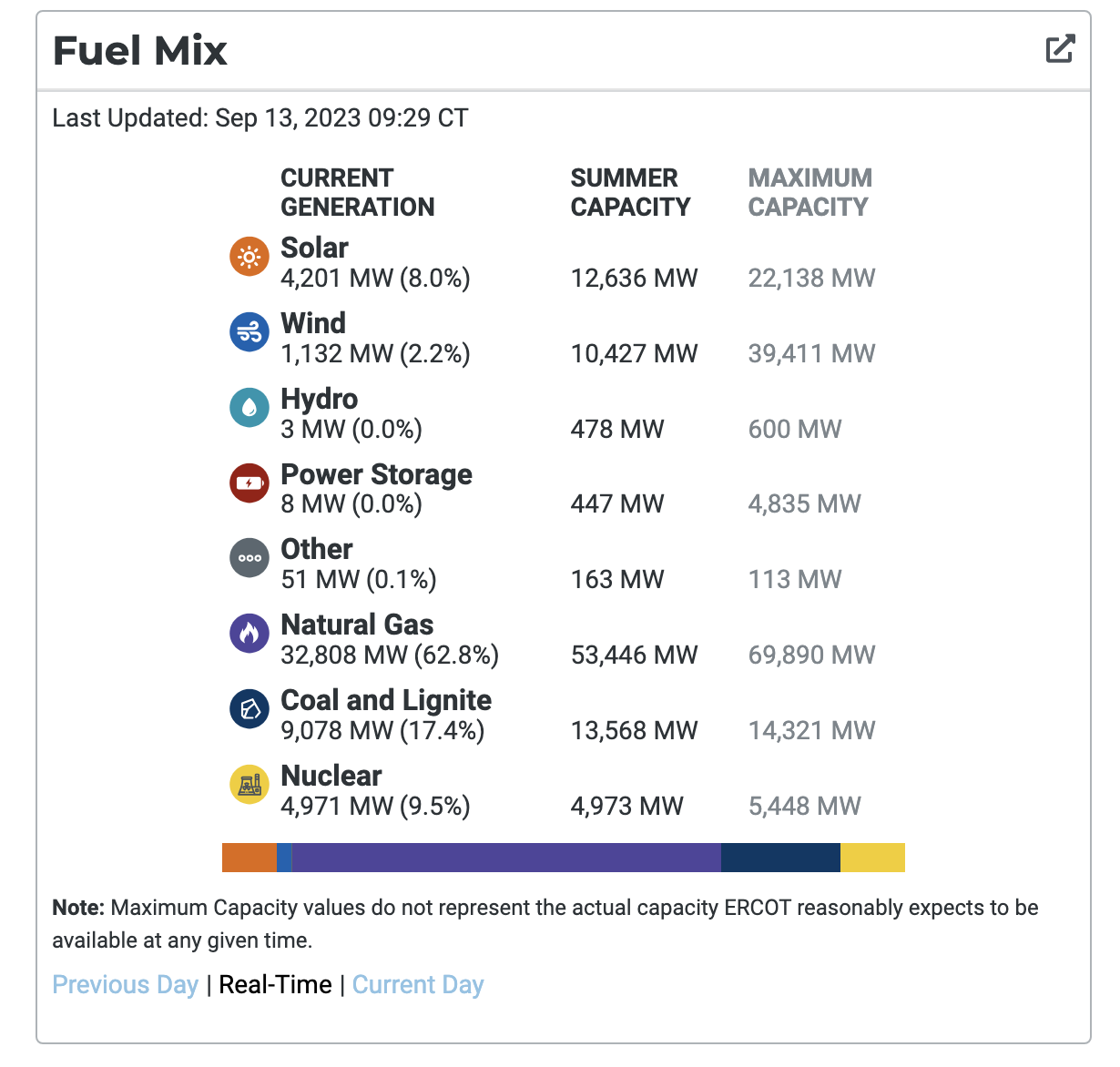
Solar generated 8%, and wind was just 2.2% of total generation. Natural gas keeps the lights on along with the other dependables, coal and nuclear. The big three were generating a whopping 89.7% of Texas power.
This mix has been similar for all U.S. grids all summer. Here are some examples. According to data from the Energy Information Administration, EIA, and summarized in Grid Brief, natural gas, coal, and nuclear were the top three sources of power generation for all U.S. grids for the week of September 5 through September 12, 2023:
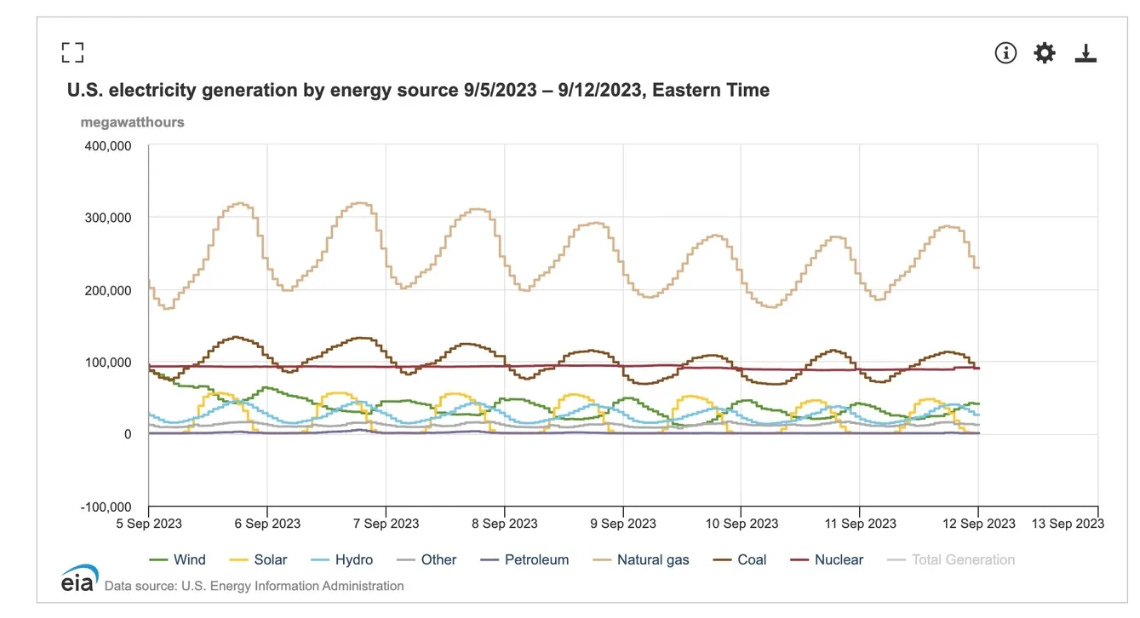
Of course, there were some regional differences. While ISO New England depended on natural gas, coal, and nuclear, it operated at its limits due to natural gas pipeline constraints. It had to fire up some fuel oil burners, as seen in the little purple blips on September 6, 7, and 8, to avoid load shedding, also known as rolling blackouts.
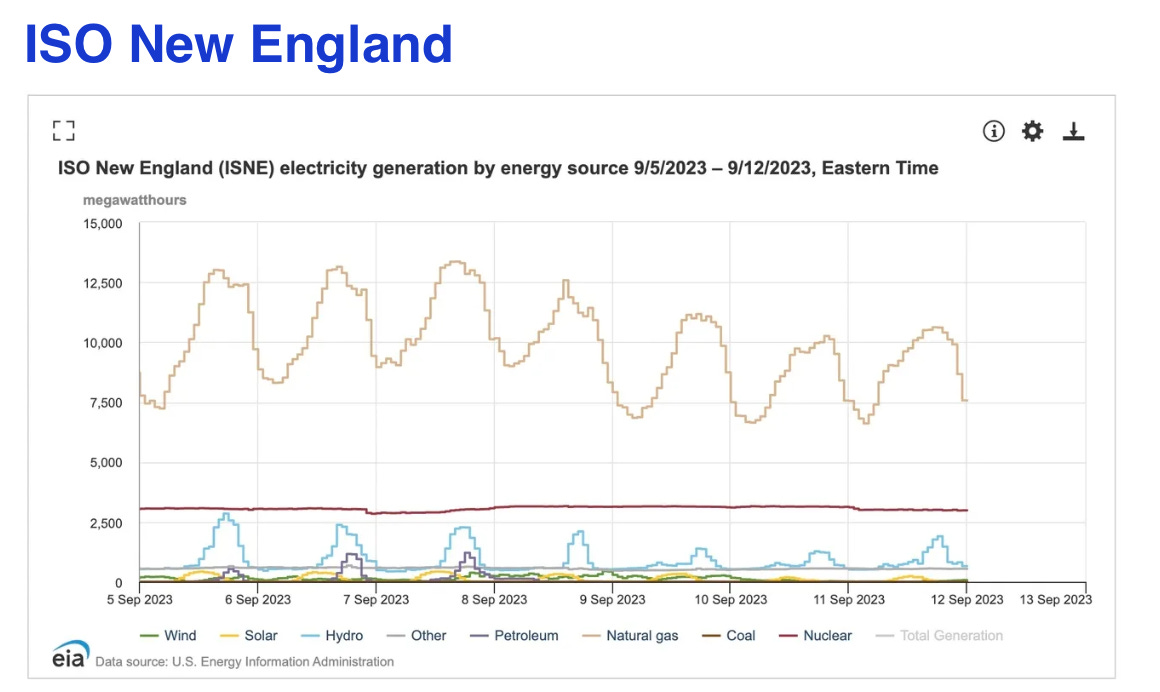
New York ISO also relied on natural gas, hydro, and nuclear, with a few “bumps” of oil-fired generation to meet peak demands:
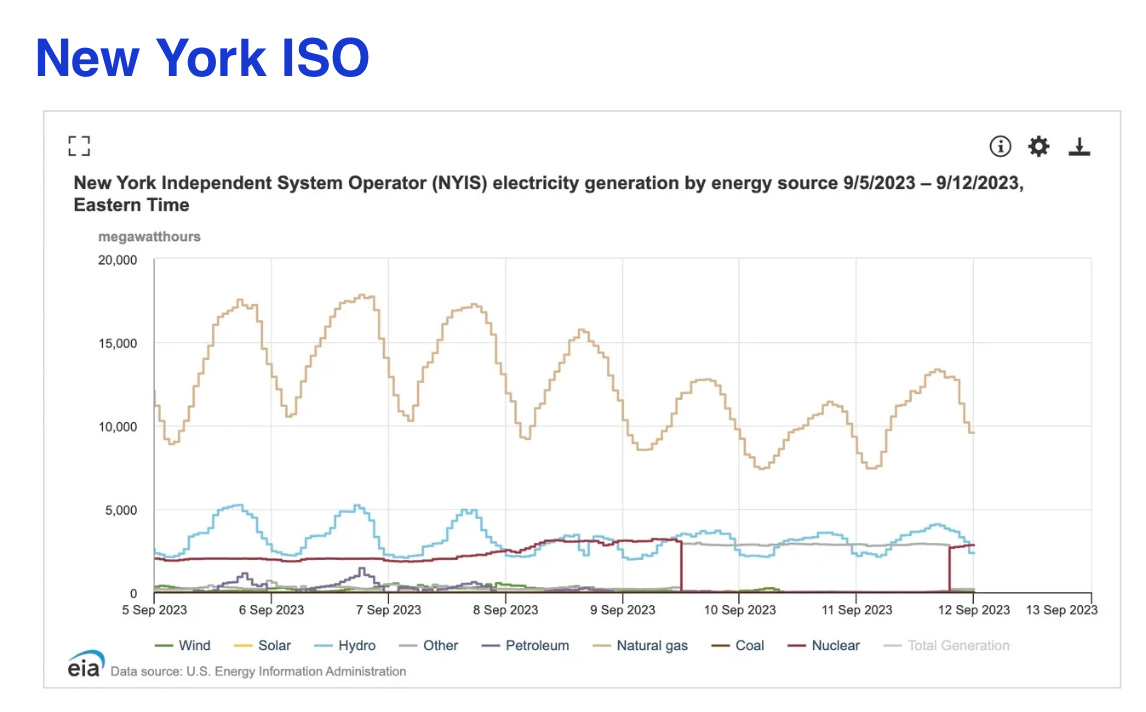
PJM Interconnection, the largest U.S. grid, also primarily depended on the three reliables, natural gas, coal, and nuclear:
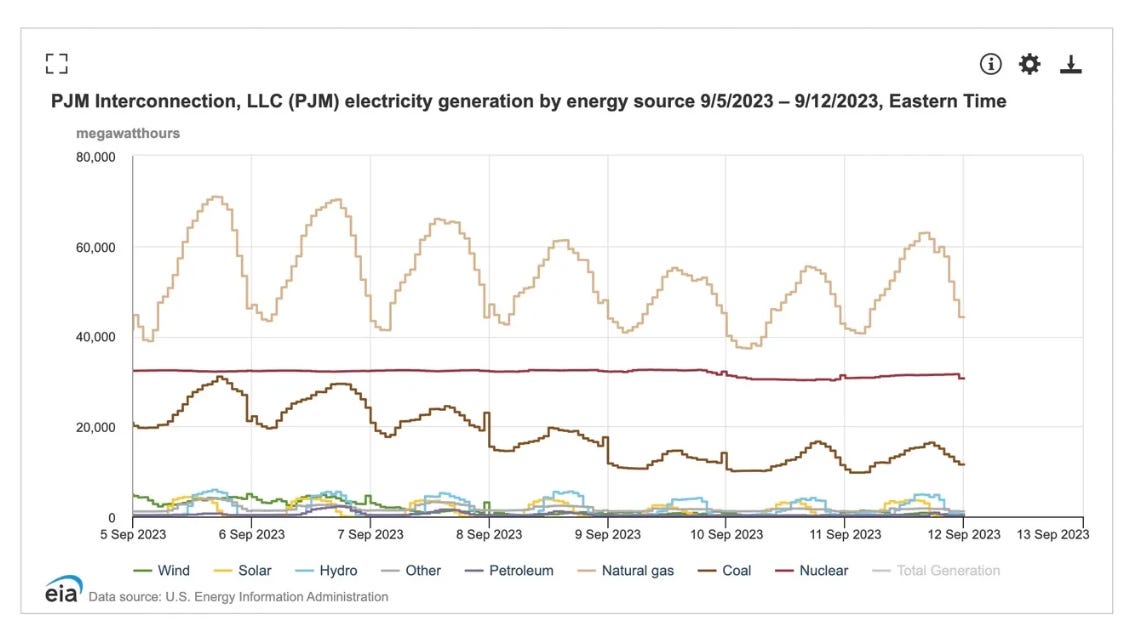
Midcontinent Independent System Operator, Inc., or MISO, had a few days of higher-than-normal wind on September 5th and 6th but otherwise depended on natural gas, coal, and nuclear:
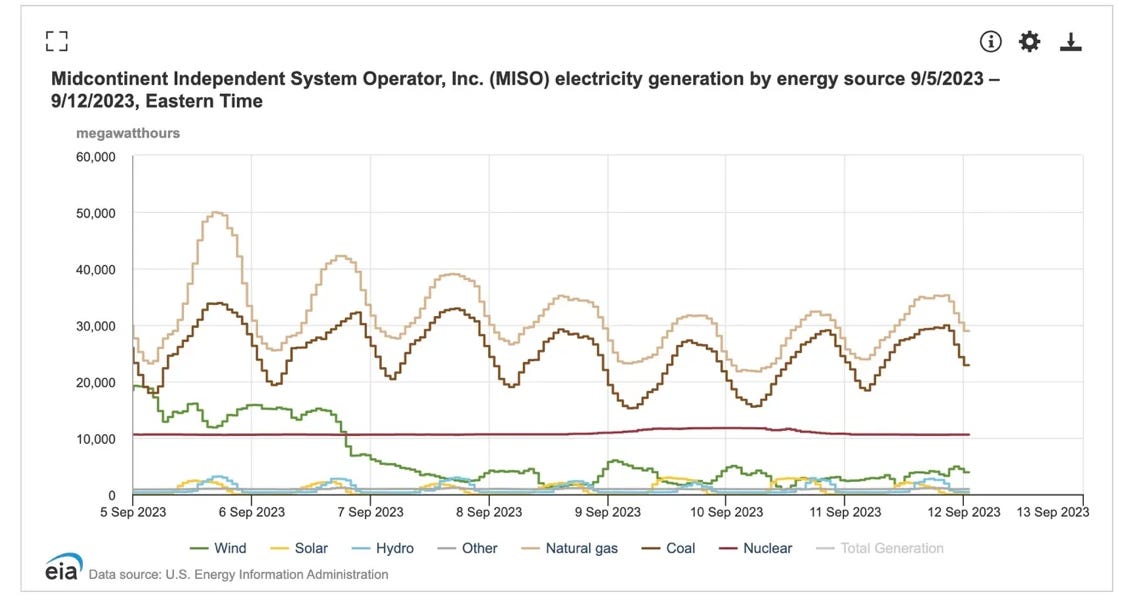
The Southwest Power Pool, SWPP, had load-balancing challenges, but natural gas and coal generation worked hard to fill the gap when the wind died every day of the week:”
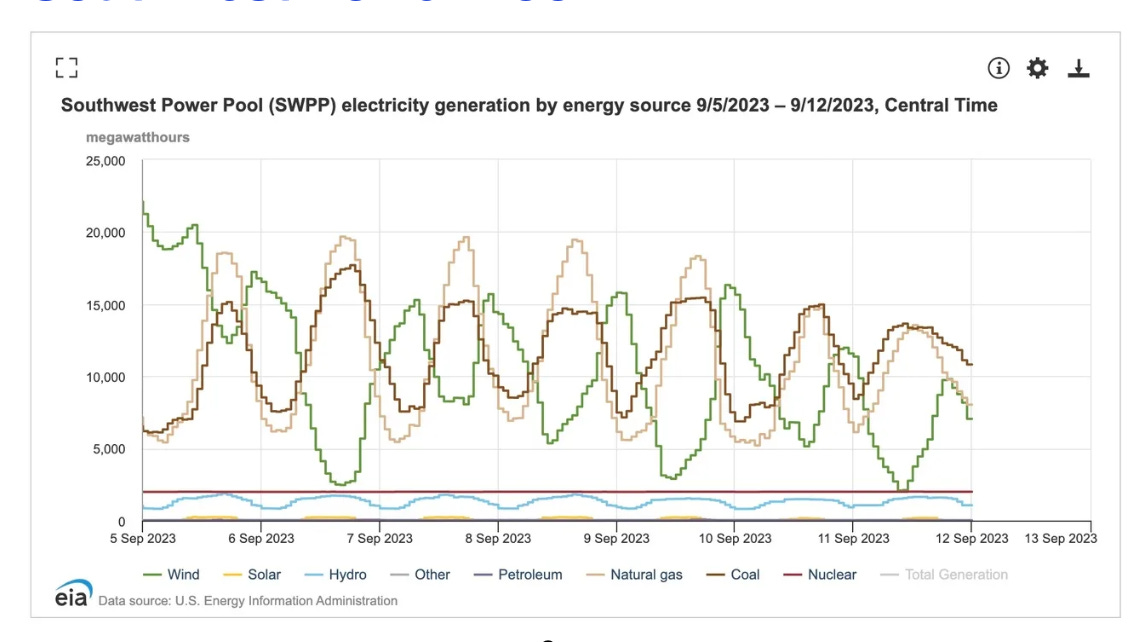
In the California ISO, natural gas, solar, and hydro were the top generators last week. California has so much solar that it “outshined” natural gas from September 5 to the 10th, when natural gas came to the rescue. Even California has some cloudy days and needs help from a fuel that is not weather-dependent. Of course, if California solar fails, they import electricity from neighboring states.
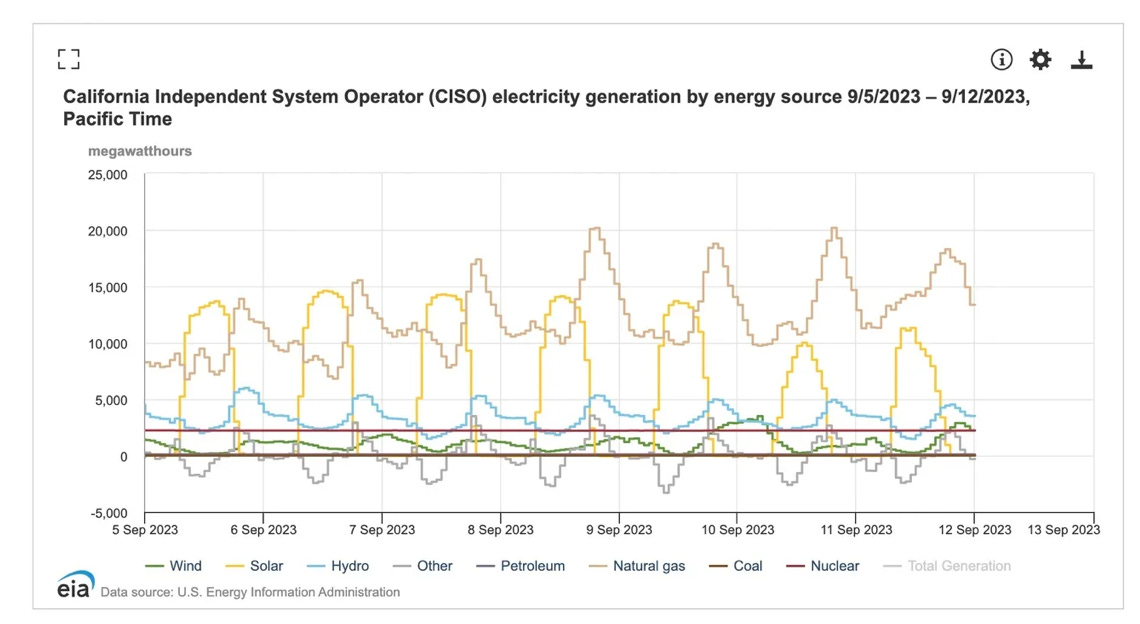
In the Texas grid operated by ERCOT, wind barely edged out natural gas on September 5, but after that, natural gas was back in its usual spot as the top power producer.
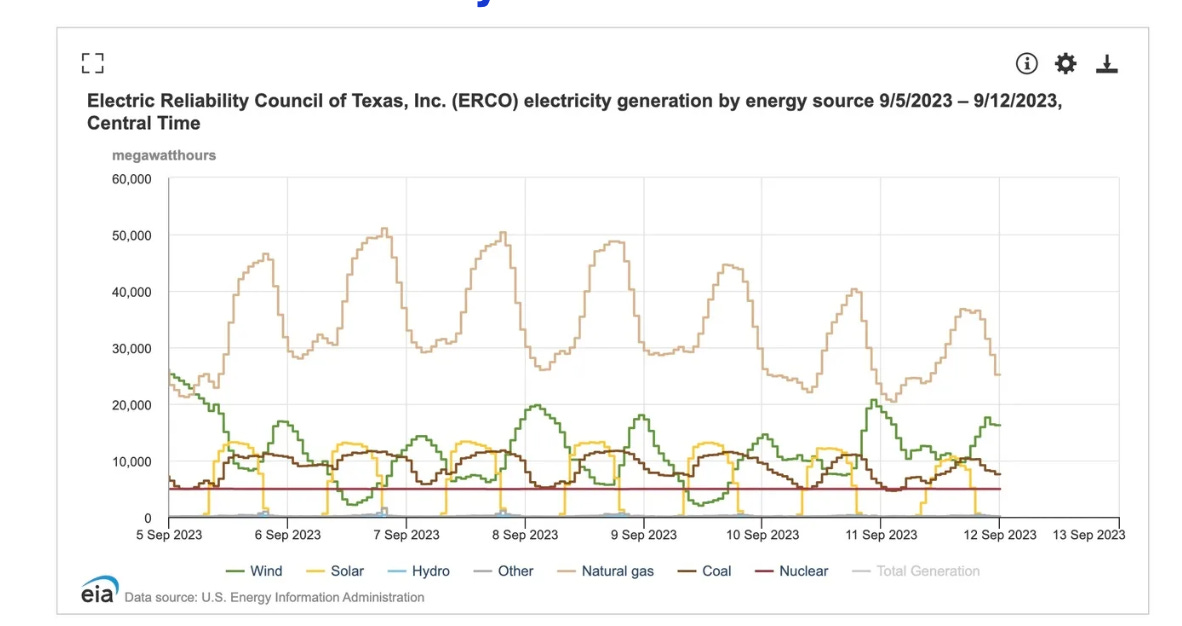
On September 6, ERCOT issued a Level 2 emergency at 7:25 PM as the sun had set and the wind practically stopped, as shown in the graph by the green line, while the electricity demand soared due to the high air conditioning load.
Also contributing to the problem was an unusually high percentage of natural gas generation, between 5 and 11 MW, which was offline for maintenance after operating all out for months, skipping the usual maintenance schedules. Pablo Vegas, the President and CEO of ERCOT, said: “High demand, lower wind generation, and the declining solar generation during sunset led to lower operating reserves on the grid and eventually contributed to lower frequency, which precipitated the emergency Level 2 declaration.”
Here is the fuel mix Vegas referred to when the emergency was declared (thanks to David Blackmon for this well-timed screen capture):
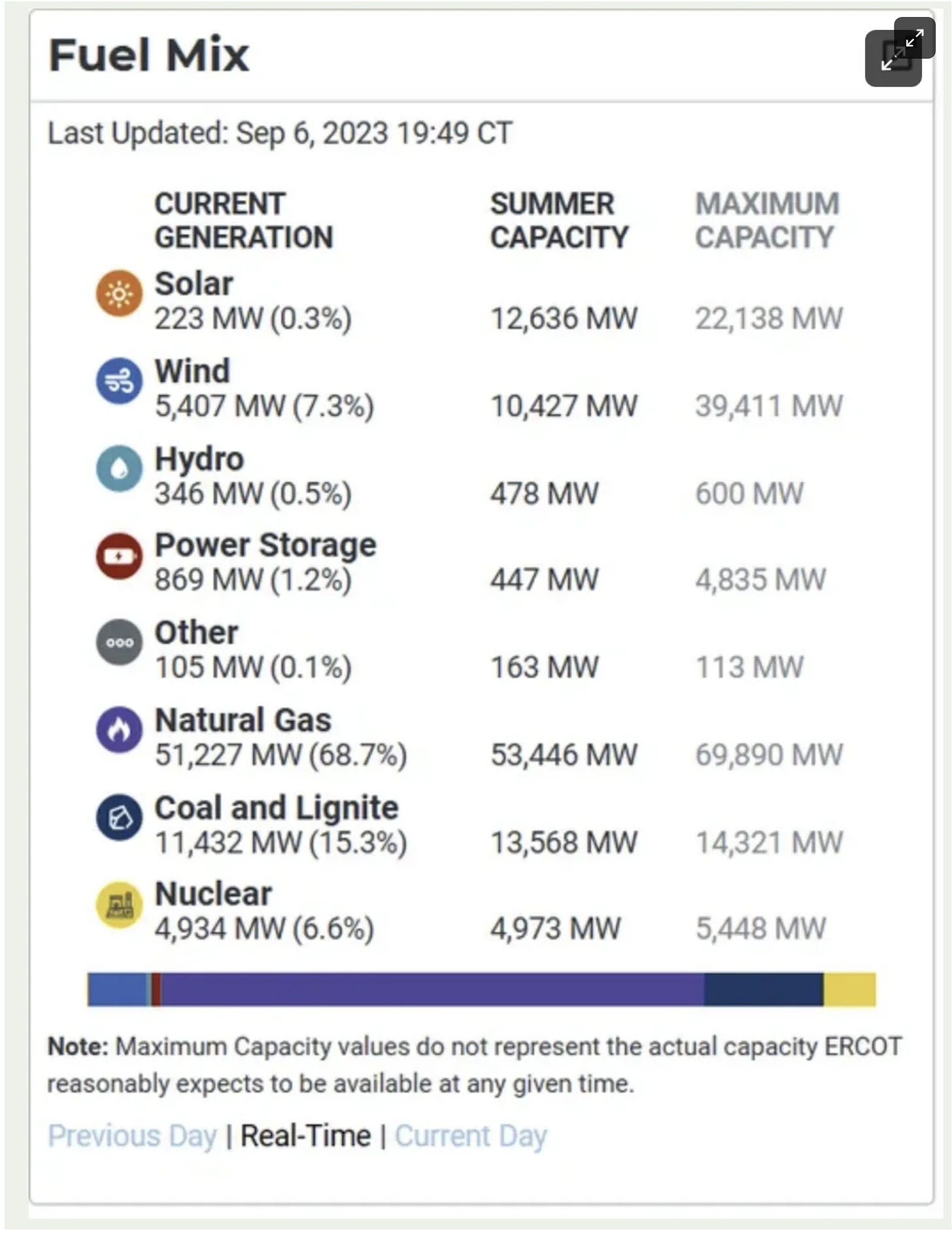
The “lower frequency” Vegas referred to was the rapid drop in the grid frequency from 60 cycles per second, or Hertz (Hz), to below 59.8. Below this level, generators go into automatic shutdown so rolling blackouts would have been necessary. ERCOT deployed rapid-response “Ancillary Services” and avoided further problems, as shown in this ERCOT Dashboard:
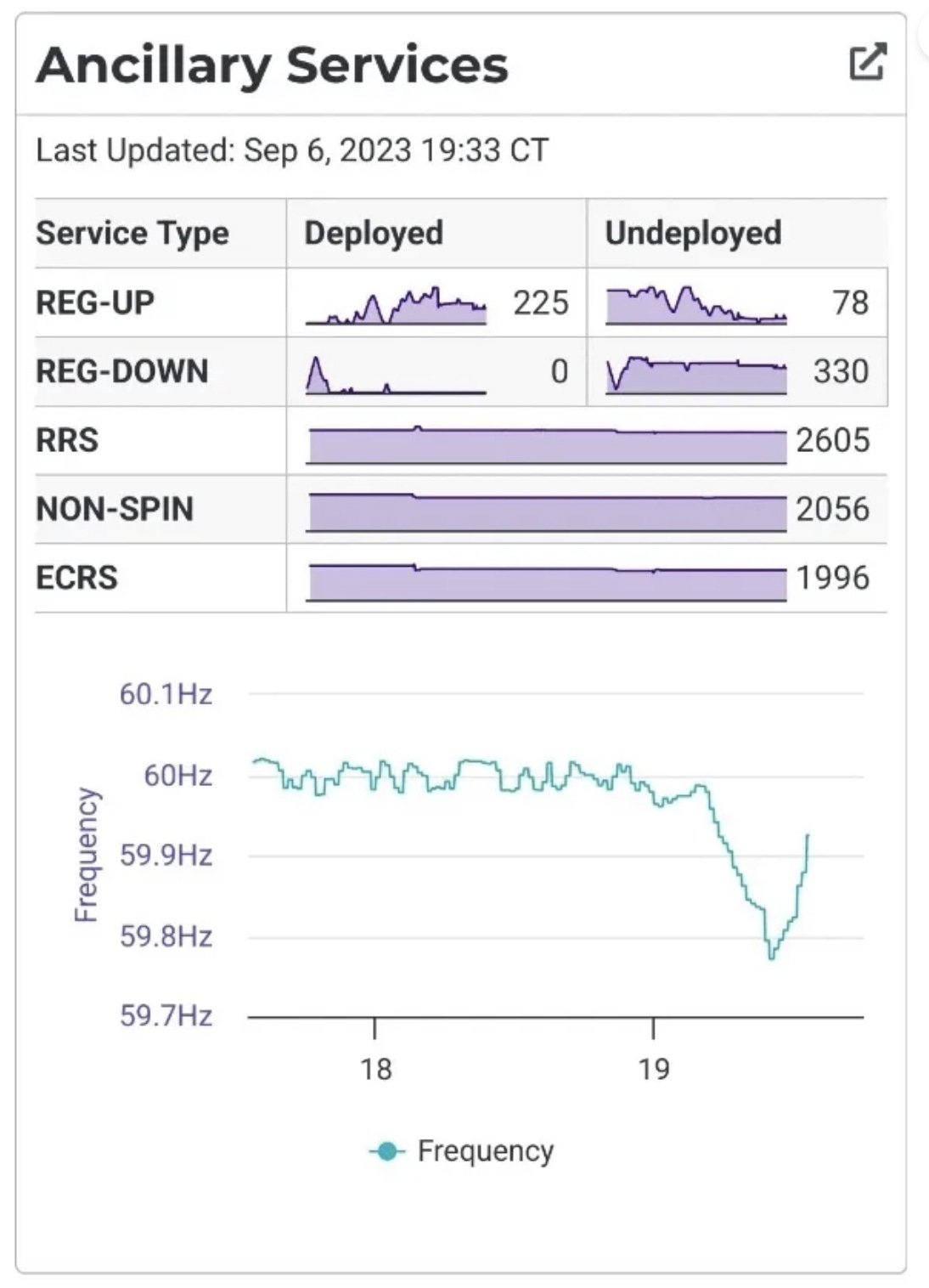
It didn’t take long before the gaslighting began, with the facts being misconstrued as having been caused by shortages of natural gas and coal generation, as seen in this posting:
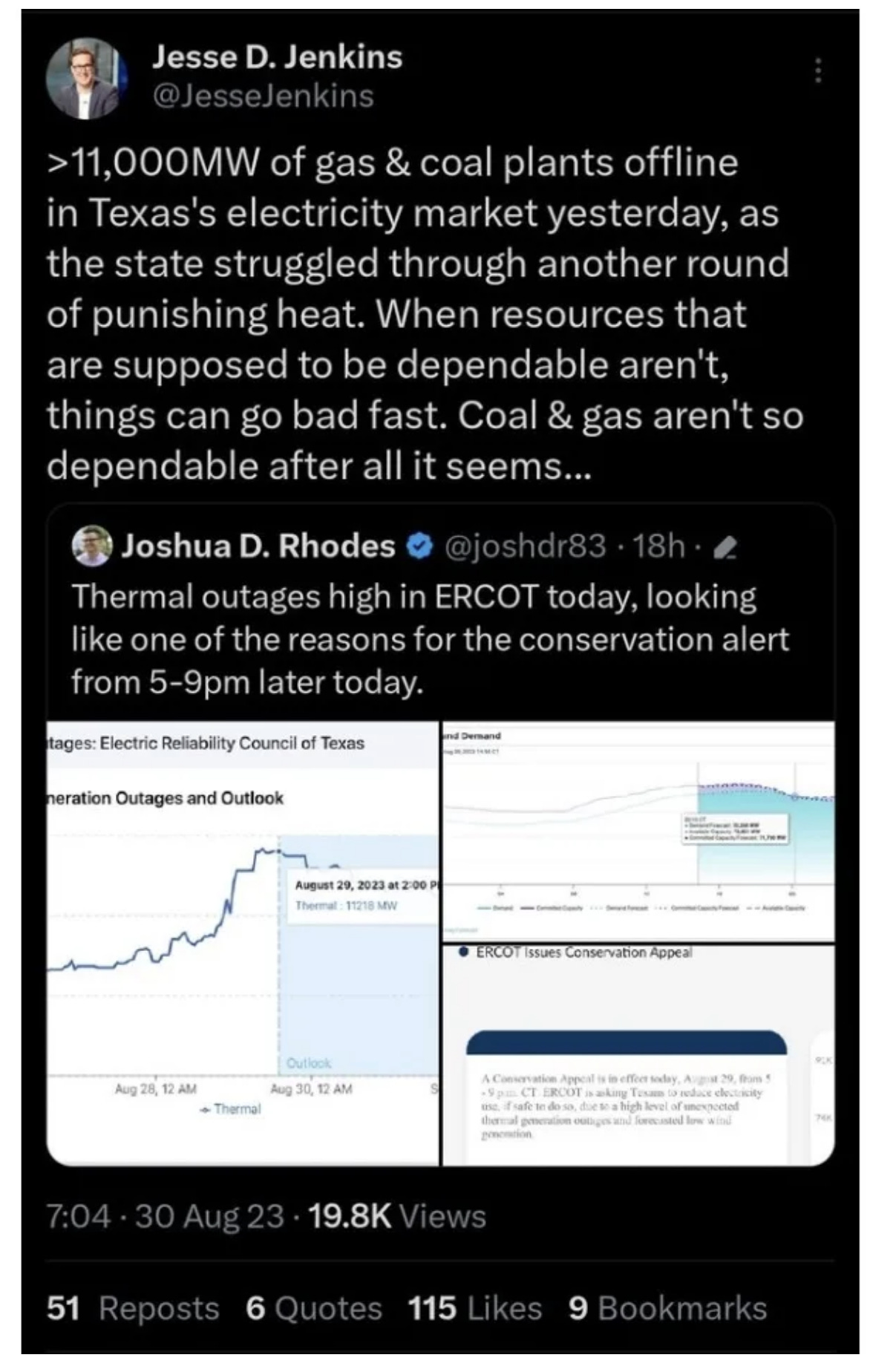
The facts are that wind power in Texas had been much lower than expected during July and August, which forced natural gas and coal generators to forego routine maintenance. The lack of maintenance finally caught up with those generators, and many told ERCOT the day before September 6 that they would not be available on September 6. Misconstruing this fact by saying that “coal and gas aren’t dependable after all” is gaslighting at its finest. Such gaslighting has been all too frequent on days when wind and solar are doing well and grids are still struggling to meet high electricity demands. Saying that wind and solar are “saving the grids” is pure gaslighting.
The problem ERCOT and other U.S. power grids are facing is not that thermal generation such as natural gas, coal, and nuclear are undependable. The problem is that ERCOT does not have enough thermal generation to adequately back up unreliable wind and solar generation when the wind is not blowing and the sun is not shining. This problem has been building for years, partly because many coal plants in Texas were retired early due to political and financial pressure.
Another problem is that ERCOT’s official “Seasonal Assessment of Resource Adequacy” or SARA reports, which calculate the reserve margin, have been assigning expected capacities for wind and solar that are “far too high.” With the near disastrous experiences of Winter Storm URI and the near disaster on September 6, 2023, it is time for ERCOT to get serious and incorporate the inherent inadequacies of wind and solar into their capacity projections.
It is well known that the nameplate generating capacities of wind and solar overstate their actual generating capabilities, and ERCOT’s estimates of their expected capacities continue to be too high. ERCOT should pay attention to the adage: “Fool me once, shame on you; fool me twice, shame on me. Winter Storm Uri and September 6, 2023, should have been more than enough “lessons learned.”
This summer has shown once again that wind and solar are less dependable than ERCOT has assumed, and it is past time for ERCOT to develop incentives that will encourage more natural gas generation to stabilize the Texas grid.
Thank you for reading “Thoughts about Energy and Economics.” This is a reader-supported publication, so please “Like” it, share it with friends and colleagues, and become a paid subscriber. Your support is greatly appreciated!



